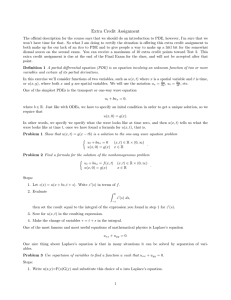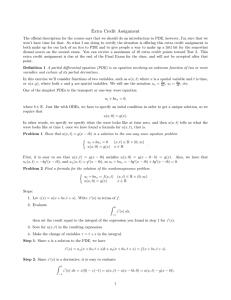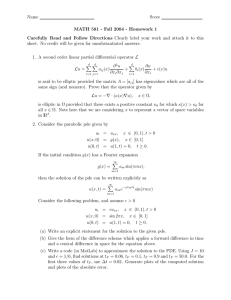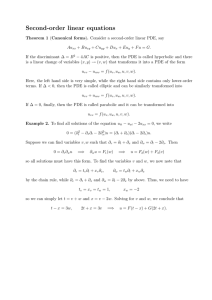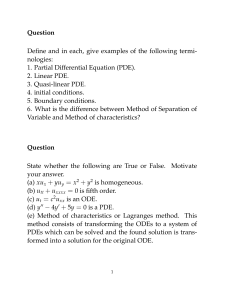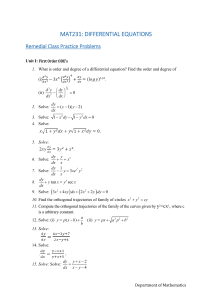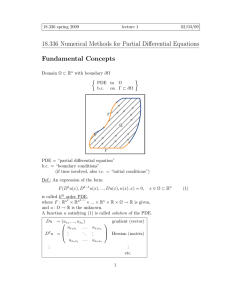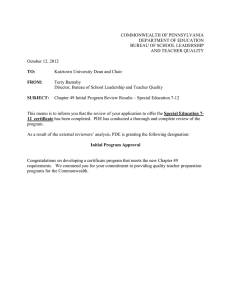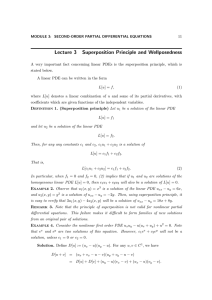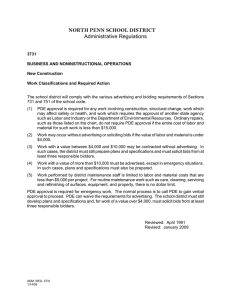Name Score Spring 2005 MATH 582 Homework 2
advertisement
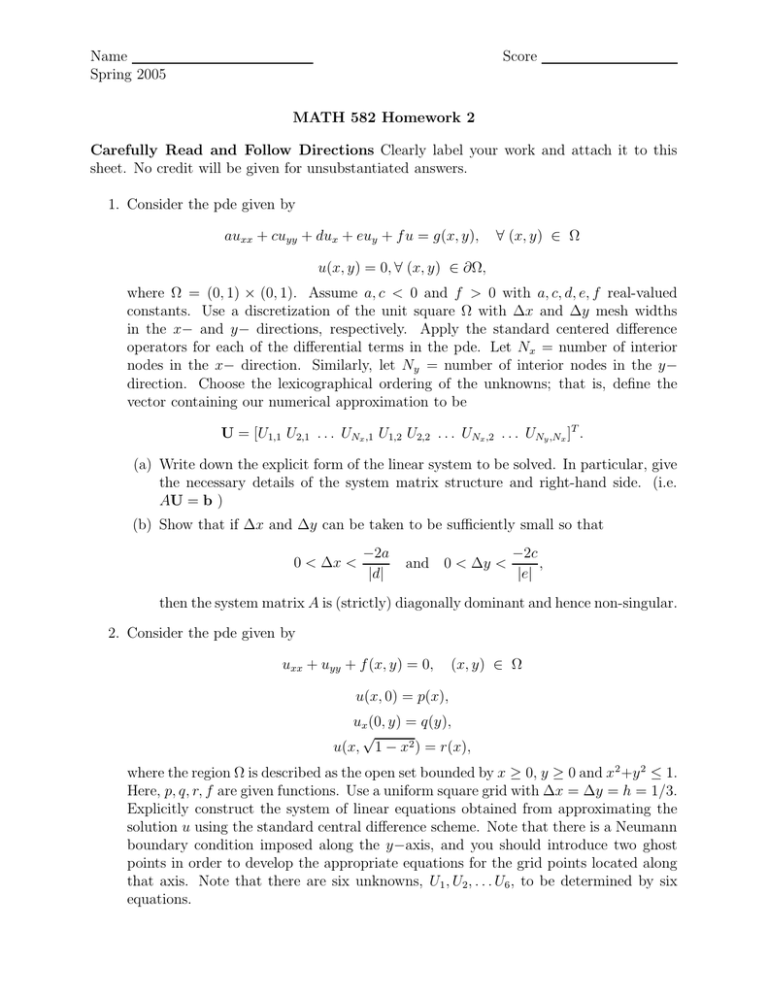
Name Spring 2005 Score MATH 582 Homework 2 Carefully Read and Follow Directions Clearly label your work and attach it to this sheet. No credit will be given for unsubstantiated answers. 1. Consider the pde given by auxx + cuyy + dux + euy + f u = g(x, y), ∀ (x, y) ∈ Ω u(x, y) = 0, ∀ (x, y) ∈ ∂Ω, where Ω = (0, 1) × (0, 1). Assume a, c < 0 and f > 0 with a, c, d, e, f real-valued constants. Use a discretization of the unit square Ω with ∆x and ∆y mesh widths in the x− and y− directions, respectively. Apply the standard centered difference operators for each of the differential terms in the pde. Let Nx = number of interior nodes in the x− direction. Similarly, let Ny = number of interior nodes in the y− direction. Choose the lexicographical ordering of the unknowns; that is, define the vector containing our numerical approximation to be U = [U1,1 U2,1 . . . UNx ,1 U1,2 U2,2 . . . UNx ,2 . . . UNy ,Nx ]T . (a) Write down the explicit form of the linear system to be solved. In particular, give the necessary details of the system matrix structure and right-hand side. (i.e. AU = b ) (b) Show that if ∆x and ∆y can be taken to be sufficiently small so that 0 < ∆x < −2a |d| and 0 < ∆y < −2c , |e| then the system matrix A is (strictly) diagonally dominant and hence non-singular. 2. Consider the pde given by uxx + uyy + f (x, y) = 0, (x, y) ∈ Ω u(x, 0) = p(x), ux (0, y) = q(y), √ u(x, 1 − x2 ) = r(x), where the region Ω is described as the open set bounded by x ≥ 0, y ≥ 0 and x2 +y 2 ≤ 1. Here, p, q, r, f are given functions. Use a uniform square grid with ∆x = ∆y = h = 1/3. Explicitly construct the system of linear equations obtained from approximating the solution u using the standard central difference scheme. Note that there is a Neumann boundary condition imposed along the y−axis, and you should introduce two ghost points in order to develop the appropriate equations for the grid points located along that axis. Note that there are six unknowns, U1 , U2 , . . . U6 , to be determined by six equations. over → Notation to be used in problem 2: O A B C D P = = = = = = (0, 0) (h, 0) (2h, 0) (0, h) (0, 2h) √ ( 1 − h2 , h) q Q = ( 1 − (2h)2 , 2h) q R = (2h, 1 − (2h)2 ) √ S = (h, 1 − h2 ) T = (0, 1) 2
